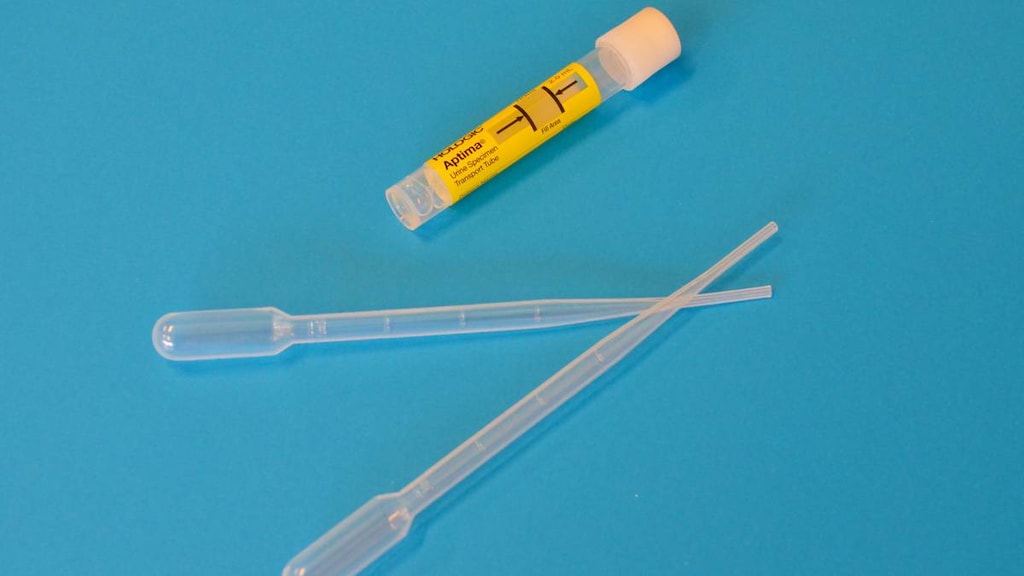Dosage Forms
Excipient information presented when available (limited, particularly for generics); consult specific product labeling. [DSC] = discontinued product
Infusion [premixed, frozen]:
Timentin: Ticarcillin 3 g and clavulanic acid 0.1 g (100 mL [DSC]) [contains sodium 4.51 mEq and potassium 0.15 mEq per g]
Injection, powder for reconstitution:
Timentin: Ticarcillin 3 g and clavulanic acid 0.1 g (3.1 g [DSC], 31 g [DSC]) [contains sodium 4.51 mEq and potassium 0.15 mEq per g]
Pharmacology
Mechanism of Action
Inhibits bacterial cell wall synthesis by binding to one or more of the penicillin-binding proteins (PBPs), which in turn inhibits the final transpeptidation step of peptidoglycan synthesis in bacterial cell walls, thus inhibiting cell wall biosynthesis. Bacteria eventually lyse due to ongoing activity of cell wall autolytic enzymes (autolysins and murein hydrolases) while cell wall assembly is arrested.
Pharmacokinetics/Pharmacodynamics
Distribution
Ticarcillin is distributed into tissue, interstitial fluid, pleural fluid, and bile; low concentrations of ticarcillin distribute into the CSF but increase when meninges are inflamed; Vdss:
Ticarcillin: 0.22 L/kg
Clavulanic acid: 0.4 L/kg
Metabolism
Clavulanic acid is metabolized hepatically
Excretion
Children: Ticarcillin: Urine (71% 50% as unchanged drug over 4 hour); Clavulanic acid: Urine (50% as unchanged drug over 4 hours)
Adults: Ticarcillin: Urine (60% to 70% as unchanged drug); Clavulanic acid: Urine (35% to 45% as unchanged drug)
Time to Peak
Immediately following completion of 30-minute infusion
Half-Life Elimination
Neonates: Ticarcillin: 4.4 hours; Clavulanic acid: 1.9 hours
Children (1 month to 9.3 years): Ticarcillin: 66 minutes; Clavulanic acid: 54 minutes
Adults: Ticarcillin: 66 to 72 minutes; 13 hours (in patients with renal failure); Clavulanic acid: 66 to 90 minutes; clavulanic acid does not affect the clearance of ticarcillin
Protein Binding
Ticarcillin: ~45%; Clavulanic acid: ~25%
Use: Labeled Indications
Bone and joint infections: Treatment of bone and joint infections caused by beta-lactamase-producing isolates of Staphylococcus aureus.
Endometritis: Treatment of endometritis caused by beta-lactamase-producing isolates of Prevotella melaninogenicus, Enterobacter species (including E. cloacae), Klebsiella pneumoniae, Escherichia coli, S. aureus, or Staphylococcus epidermidis.
Lower respiratory tract infections: Treatment of lower respiratory tract infections caused by beta-lactamase-producing isolates of S. aureus, Haemophilus influenzae, or Klebsiella species.
Peritonitis: Treatment of peritonitis caused by beta-lactamase-producing isolates of E. coli, K. pneumonia, or Bacteroides fragilis group.
Septicemia: Treatment of septicemia (including bacteremia) caused by beta-lactamase-producing isolates of Klebsiella species, E. coli, S. aureus, or Pseudomonas aeruginosa (or other Pseudomonas species).
Skin and skin structure infections: Treatment of skin and skin structure infections caused by beta-lactamase-producing isolates of S. aureus, Klebsiella species, or E. coli.
Urinary tract infections: Treatment of complicated and uncomplicated urinary tract infections caused by beta-lactamase-producing isolates of E. coli, Klebsiella species, P. aeruginosa (and other Pseudomonas species), Citrobacter species, Enterobacter cloacae, Serratia marcescens, or S. aureus.
Use: Off Label
Intra-abdominal infectionsyes
Based on the Infectious Diseases Society of America (IDSA), Diagnosis and Management of Complicated Intra-Abdominal Infections in Adults and Children guidelines, ticarcillin and clavulanate potassium is an effective and recommended treatment option for adults with community-acquired intra-abdominal infections of mild to moderate severity (eg, perforated or abscessed appendicitis).
Cystic fibrosis exacerbationsc
Data from a clinical review suggests the use of ticarcillin and clavulanate potassium in the management of cystic fibrosis exacerbations Zobell 2013. Additional trials may be necessary to determine the clinical efficacy of higher than FDA-approved doses for this condition.
Contraindications
Hypersensitivity (history of a serious reaction [eg, anaphylaxis, Stevens-Johnson syndrome]) to ticarcillin, clavulanate, or to other beta-lactams (eg, penicillins, cephalosporins)
Dosage and Administration
Dosing: Adult
Note: Timentin (ticarcillin/clavulanate) is a combination product; each 3.1 g dosage form contains 3 g ticarcillin disodium and 0.1 g clavulanic acid.
Gynecologic infections (eg endometritis): IV:
Moderate infections: 200 mg ticarcillin/kg/day in divided doses every 6 hours (maximum: 12 g daily)
Severe infections: 300 mg ticarcillin/kg/day in divided doses every 4 hours (maximum: 18 g daily)
Systemic infections: IV:
<60 kg: 200-300 mg ticarcillin/kg/day in divided doses every 4-6 hours (maximum: 18 g daily)
≥60 kg: 3.1 g every 4-6 hours
Urinary tract infections: IV:
<60 kg: 200-300 mg ticarcillin/kg/day in divided doses every 4-6 hours (maximum: 18 g daily)
≥60 kg: 3.1 g every 4-6 hours
Intra-abdominal infection, complicated, community-acquired, mild-to-moderate (off-label use): IV: 3.1 g every 6 hours for 4-7 days (provided source controlled) (Solomkin, 2010)
Dosing: Geriatric
Refer to adult dosing.
Dosing: Pediatric
Note: Timentin has been discontinued from the US market for more than 1 year. Timentin (ticarcillin/clavulanate) is a combination product; each 3.1 g contains 3 g ticarcillin disodium and 0.1 g clavulanic acid. Dosage recommendations are based on ticarcillin component:
General dosing, susceptible infection: Infants, Children, and Adolescents: IV:
Mild to moderate infections: 200 mg ticarcillin/kg/day in divided doses every 6 hours; maximum daily dose: 12 g ticarcillin/day
Severe infections:
Manufacturer's labeling: 300 mg ticarcillin/kg/day in divided doses every 4 hours
AAP recommendations: 200-300 mg ticarcillin/kg/day in divided doses every 4-6 hours
Maximum daily dose: 18 g ticarcillin/day
Cystic fibrosis: Infants, Children, and Adolescents: IV: 400 mg ticarcillin/kg/day in divided doses every 6 hours; higher doses have been used: 400-750 mg ticarcillin/kg/day in divided doses every 6 hours (Zobell, 2013)
Reconstitution
Reconstitute 3.1 g vials with 13 mL sterile water for injection or NS; shake well; resulting concentration is ticarcillin 200 mg/mL and clavulanic acid 6.7 mg/mL. Reconstitute 31 g bulk vials with 76 mL sterile water for injection or NS; shake well; resulting concentration is ticarcillin 300 mg/mL and clavulanic acid 10 mg/mL. Further dilute to a final concentration of 10-100 mg/mL in D5W, LR, or NS.
Administration
IV: Infuse over 30 minutes.
Some penicillins (eg, carbenicillin, ticarcillin, and piperacillin) have been shown to inactivate aminoglycosides in vitro. This has been observed to a greater extent with tobramycin and gentamicin, while amikacin has shown greater stability against inactivation. Concurrent use of these agents may pose a risk of reduced antibacterial efficacy in vivo, particularly in the setting of profound renal impairment. However, definitive clinical evidence is lacking. If combination penicillin/aminoglycoside therapy is desired in a patient with renal dysfunction, separation of doses (if feasible), and routine monitoring of aminoglycoside levels, CBC, and clinical response should be considered.
Dietary Considerations
Some products may contain potassium and/or sodium.
Storage
Vials: Store intact vials at ≤24°C (≤75°F). Reconstituted solution is stable for 6 hours at room temperature and 72 hours when refrigerated. IV infusion in NS or LR is stable for 24 hours at room temperature (21°C to 24°C [70°F to 75°F]), 7 days when refrigerated (4°C [39°F]), or 30 days when frozen (-18°C [0°F]). IV infusion in D5W solution is stable for 24 hours at room temperature (21°C to 24°C [70°F to 75°F]), 3 days when refrigerated (4°C [39°F]), or 7 days when frozen (-18°C [0°F]. After freezing, thawed solution is stable for 8 hours at room temperature. Do not refreeze. Darkening of drug indicates loss of potency of clavulanate potassium.
Premixed solution: Store frozen at ≤-20°C (-4°F). Thawed solution is stable for 24 hours at room temperature (22°C [72°F]) or 7 days under refrigeration at (4°C [39°F]); do not refreeze.
Drug Interactions
Acemetacin: May increase the serum concentration of Penicillins. Monitor therapy
Aminoglycosides: Penicillins may decrease the serum concentration of Aminoglycosides. Primarily associated with extended spectrum penicillins, and patients with renal dysfunction. Consider therapy modification
BCG (Intravesical): Antibiotics may diminish the therapeutic effect of BCG (Intravesical). Avoid combination
BCG Vaccine (Immunization): Antibiotics may diminish the therapeutic effect of BCG Vaccine (Immunization). Monitor therapy
Cholera Vaccine: Antibiotics may diminish the therapeutic effect of Cholera Vaccine. Management: Avoid cholera vaccine in patients receiving systemic antibiotics, and within 14 days following the use of oral or parenteral antibiotics. Avoid combination
Dichlorphenamide: Penicillins may enhance the hypokalemic effect of Dichlorphenamide. Monitor therapy
Lactobacillus and Estriol: Antibiotics may diminish the therapeutic effect of Lactobacillus and Estriol. Monitor therapy
Methotrexate: Penicillins may increase the serum concentration of Methotrexate. Monitor therapy
Mycophenolate: Penicillins may decrease serum concentrations of the active metabolite(s) of Mycophenolate. This effect appears to be the result of impaired enterohepatic recirculation. Monitor therapy
Probenecid: May increase the serum concentration of Penicillins. Monitor therapy
Sodium Picosulfate: Antibiotics may diminish the therapeutic effect of Sodium Picosulfate. Management: Consider using an alternative product for bowel cleansing prior to a colonoscopy in patients who have recently used or are concurrently using an antibiotic. Consider therapy modification
Tetracyclines: May diminish the therapeutic effect of Penicillins. Monitor therapy
Typhoid Vaccine: Antibiotics may diminish the therapeutic effect of Typhoid Vaccine. Only the live attenuated Ty21a strain is affected. Management: Vaccination with live attenuated typhoid vaccine (Ty21a) should be avoided in patients being treated with systemic antibacterial agents. Use of this vaccine should be postponed until at least 3 days after cessation of antibacterial agents. Consider therapy modification
Vitamin K Antagonists (eg, warfarin): Penicillins may enhance the anticoagulant effect of Vitamin K Antagonists. Monitor therapy
Test Interactions
Positive Coombs' test, false-positive urinary proteins
Some penicillin derivatives may accelerate the degradation of aminoglycosides in vitro, leading to a potential underestimation of aminoglycoside serum concentration.
Adverse Reactions
Frequency not defined.
Cardiovascular: Local thrombophlebitis (with IV injection)
Central nervous system: Confusion, drowsiness, headache, seizure
Dermatologic: Skin rash
Endocrine & metabolic: Electrolyte disturbance, hypernatremia, hypokalemia
Gastrointestinal: Clostridioides (formerly Clostridium) difficile-diarrhea, diarrhea, nausea
Genitourinary: Proteinuria (false positive)
Hematologic & oncologic: Bleeding complication, eosinophilia, hemolytic anemia, positive direct Coombs' test (false positive)
Hepatic: Hepatotoxicity, increased serum ALT, increased serum AST, jaundice
Immunologic: Jarisch Herxheimer reaction
Infection: Superinfection (fungal or bacterial)
Renal: Interstitial nephritis (acute)
Miscellaneous: Anaphylaxis
Postmarketing and/or case reports: Abdominal pain, altered sense of smell, arthralgia, chest discomfort, chills, decreased hematocrit, decreased hemoglobin, decreased serum potassium, dizziness, dysgeusia, erythema multiforme, fever, flatulence, headache, hemorrhagic cystitis, hypersensitivity reaction, hypouricemia, increased blood urea nitrogen, increased lactate dehydrogenase, increased serum alkaline phosphatase, increased serum bilirubin, increased serum creatinine, injection site reaction (burning, induration, pain, swelling), leukopenia, myalgia, myclonus, neutropenia, prolonged prothrombin time, pruritus, pseudomembranous colitis (during or after antibacterial treatment), Stevens-Johnson syndrome, stomatitis, thrombocytopenia, toxic epidermal necrolysis, urticaria, vomiting
Warnings/Precautions
Concern related to adverse effects:
- Hypersensitivity reactions: Serious and occasionally severe or fatal hypersensitivity (anaphylactic) reactions have been reported in patients on penicillin therapy, especially with a history of beta-lactam hypersensitivity, history of sensitivity to multiple allergens, or previous IgE-mediated reactions (eg, anaphylaxis, angioedema, urticaria). Use with caution in asthmatic patients.
- Bleeding disorders: Particularly in patients with renal impairment, bleeding disorders have been observed; discontinue if thrombocytopenia or bleeding occurs.
- Hypokalemia: Hypokalemia has been reported; monitor serum potassium in patients with fluid and electrolyte imbalance and in patients receiving prolonged therapy.
- Superinfection: Prolonged use may result in fungal or bacterial superinfection, including C. difficile-associated diarrhea (CDAD) and pseudomembranous colitis; CDAD has been observed >2 months postantibiotic treatment.
Disease-related concerns:
- Heart failure (HF): Use with caution in patients with HF, due to high sodium load.
- Renal impairment: Use with caution in patients with renal impairment; dosage adjustment recommended.
- Seizure disorders: Use with caution in patients with a history of seizure disorder; high levels, particularly in the presence of renal impairment, may increase risk of seizures.
Monitoring Parameters
Observe for signs and symptoms of anaphylaxis during first dose; serum electrolytes, bleeding time, and periodic tests of renal, hepatic, and hematologic function
Pregnancy
Pregnancy Risk Factor
B
Pregnancy Considerations
Adverse events were not observed in animal reproduction studies. Ticarcillin and clavulanate cross the placenta (Maberry, 1992). Maternal use of penicillins has generally not resulted in an increased risk of adverse fetal effects (Crider, 2009; Santos, 2011). Ticarcillin/clavulanate is approved for the treatment of postpartum gynecologic infections, including endometritis, caused by susceptible organisms.




